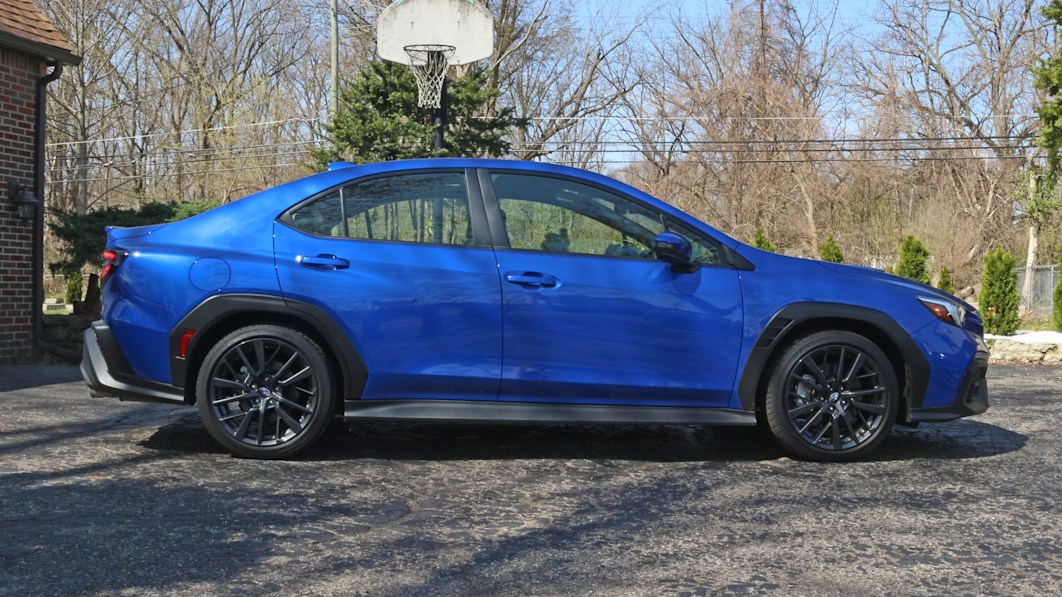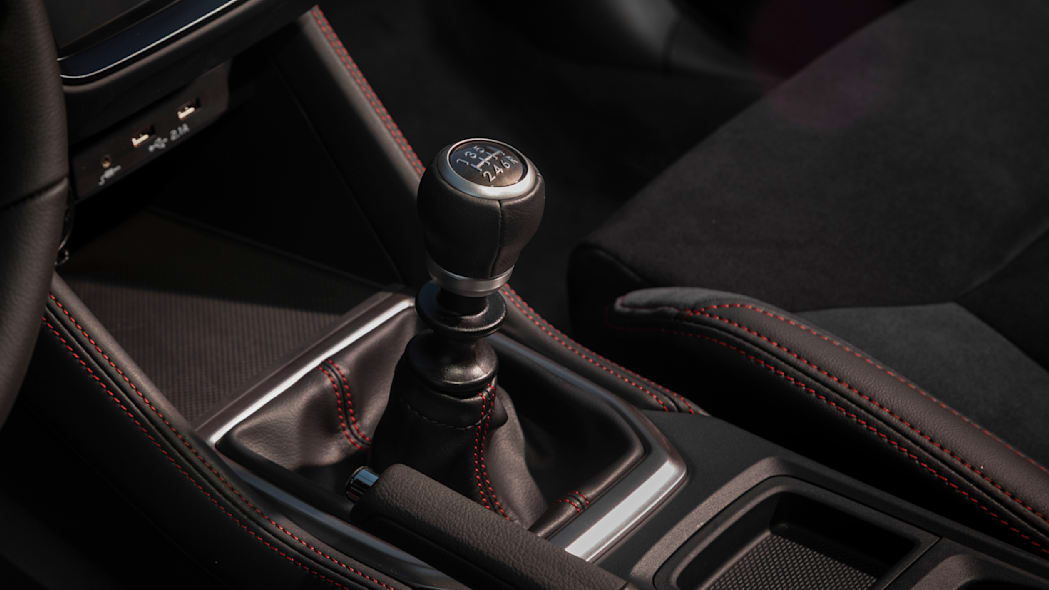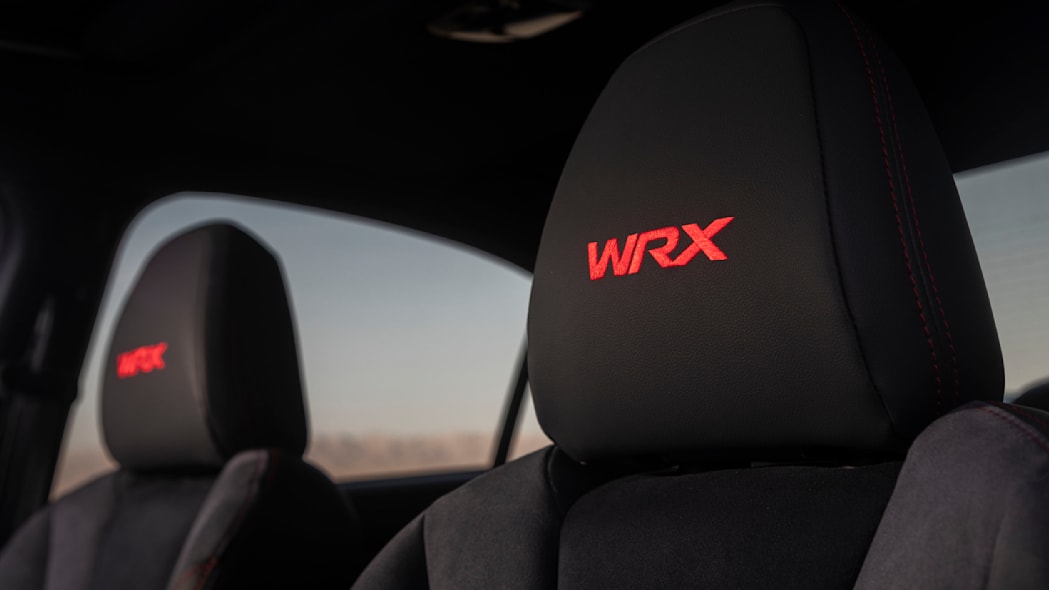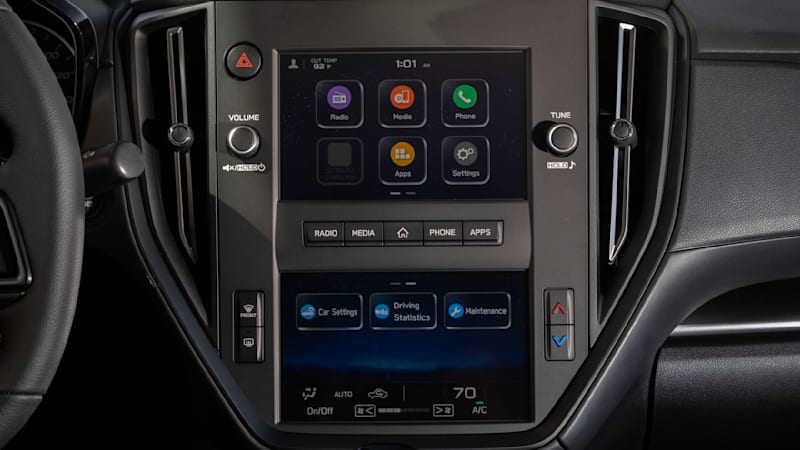2022 Subaru WRX Road Test Review | Subie's new turbo top dog

We’ve entered a new era of new-but-not-so-different enthusiast cars. Whether it’s a Blackwing, a GR86 or a Fairlady, “new” has taken on a different meaning. Take the 2022 Subaru WRX. Its platform is “new” even though it debuted six years ago on the standard Impreza. Its engine is “new” even though it shares most of its architecture with the smaller boxer it replaced. Its sheet metal is “new” even though, at least apart from the rather deliberately in-your-face plastic fender cladding, it’s pretty hard to tell the difference.
Last year, I praised the WRX’s poise and balance, and I dinged it for its perhaps-too-short gearing — oh, and the fact that it can’t be equipped with the adaptive suspension or drive mode selection systems that were firewalled behind the new GT trim. “STI is coming,” I said. Yeah, sorry about that.
You probably know the rest: Subaru came along with the internal-combustion STI’s death certificate and turned the whole formula on its ear. So, this is it — the only way to get a manual, gasoline-powered Impreza. And, so far at least, Subaru has no intention of offering it with all the bells and whistles that will be available on the new, CVT-only WRX GT. That means Subaru has put all of its AWD enthusiast eggs into this single World Rally Blue basket.
They’re some reasonably shiny eggs, at least. Its new 2.4-liter boxer-four makes 271 horsepower and 259 pound-feet of torque. Subaru says the larger engine offers a much broader torque curve than the one it replaces. All of that goes through a six-speed manual gearbox (in this case, anyway) and standard all-wheel drive.


And while the roads I traversed in northern California last year were far from immaculate, they have nothing on the cratered suggestions of old infrastructure that pass for roads in greater Detroit. Subaru said the WRX’s new, stiffer chassis allowed them to soften the ride. We already know that it didn’t dull the WRX’s reflexes any; time to see if it paid dividends in ride comfort.
But first, I have to confess something: I’ve never really been a huge fan of the WRX. Sure, it’s great on paper and I’ve always enjoyed turbocharged sport compacts, but every time I’ve piloted a plain-Jane WRX, I’ve found it underwhelming. Blame it on the Impreza’s characteristically rough edges, the parasitic loss of the AWD drivetrain or the ho-hum interiors, take your pick, but I’ve just never been that fond of the experience.
Even after the NorCal jaunt, I wrote off my better-than-expected impressions to the fact that Subaru had a great deal of control over our driving environment. Here, close to home (and 500 miles from Subaru’s New Jersey headquarters), they’d have no such opportunity. Surely, I figured, the spell would be broken. Not so.
In fact, the chassis and suspension improvements are even more obvious here. The WRX shrugs off Michigan’s broken pavement admirably and without excessive complaint from its traction or stability control systems, even in the wet. And while first and second gear may be short, the all-wheel-drive system encourages you to use them to their fullest extent. Plus, Subaru did an excellent job keeping the WRX’s drivetrain lash in check, so you won’t feel like you’re trying to break a horse if you have to modulate the throttle aggressively at higher RPM.
For the first time, driving a WRX truly clicked. In fact, I began to enjoy it perhaps a little too much, digging in from just about every stop and ham-fistedly applying power out of corners. The stereotypical midwestern AWD sport compact driver may be a dying breed by simple virtue of the fact that the requisite cars are fewer and farther between, but a new one was very nearly created deep in the Autoblog lab.


Now, the bad news. The WRX has the same infotainment options as the Outback: a bizarre dual-screen setup for the base trim level we haven’t sampled, and this Limited trim’s portrait-style single touchscreen. While certainly better than past Subaru efforts, it’s still far from perfect. In my first experience with the system, I found the UI to be crowded and unintuitive, and it includes some quirky features that make the learning curve especially punishing. Screen responsiveness is merely so-so, with some on-screen elements requiring multiple presses to register. And if you take too long to navigate a sub-menu it will simply vanish, assuming that you became distracted and no longer needed whatever brought you there in the first place. Honestly, the smaller screens and accompanying UI found in the Ascent, Forester and Crosstrek might be better.
The manual-equipped WRX also does without the EyeSight suite of driver assistance tech (as does the manual BRZ). So if you want adaptive cruise control, lane-departure warning or a little extra help in detecting oncoming deer, it’s the CVT for you — whenever Subaru gets around to building some, that is. Its introduction was staggered (likely due to ongoing chip shortage issues) and we’ve yet to hear exactly when to expect the loaded-up GT model apart from “soon.”
Subaru will always be a little rough around the edges, but the new WRX brings enough to the table to make the trade-offs worthwhile. We’d still love to see the adaptive suspension migrate down to the manual-transmission WRX, but as fixed steel setups go, this one’s hard to beat. For my money, I’m probably still looking at the BRZ sitting next to it in the showroom, but for once I wouldn’t fault you for going the other way. The WRX is now the king of Subaru’s rally-inspired sport compacts, and until an electrified STI arrives, this is probably about as “new” as performance cars from our favorite all-wheel-drive brand will get.
Related Video



